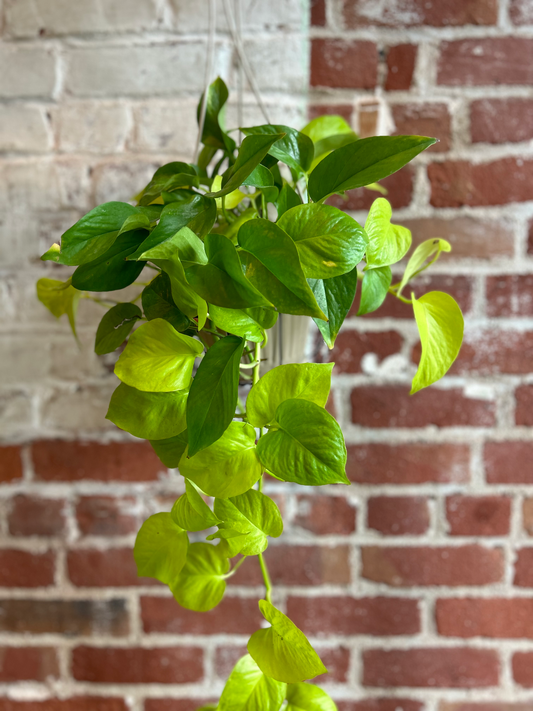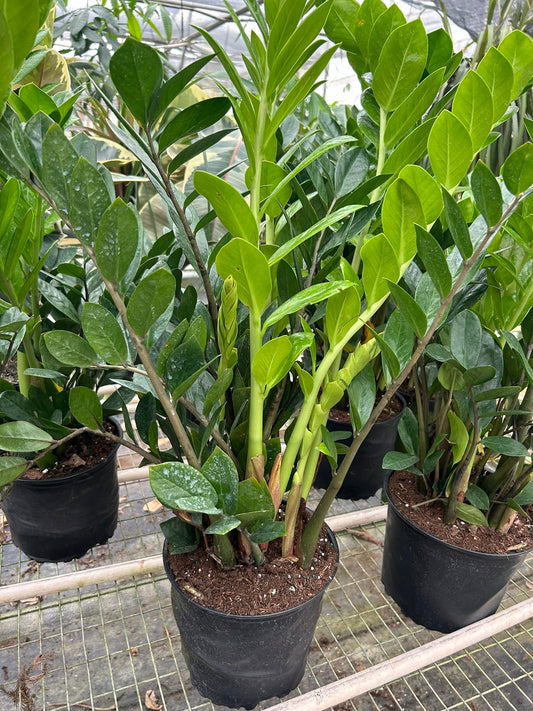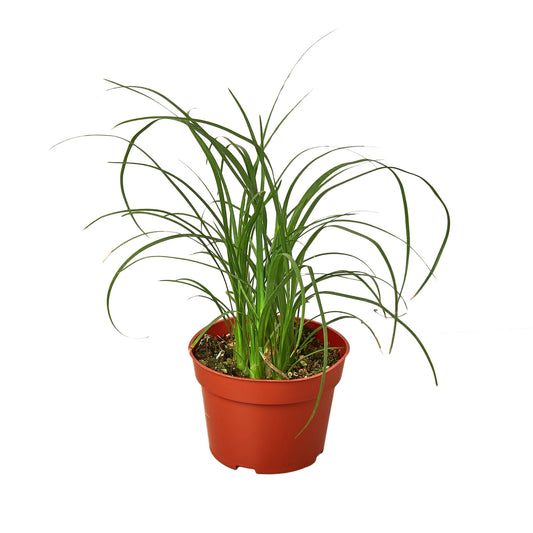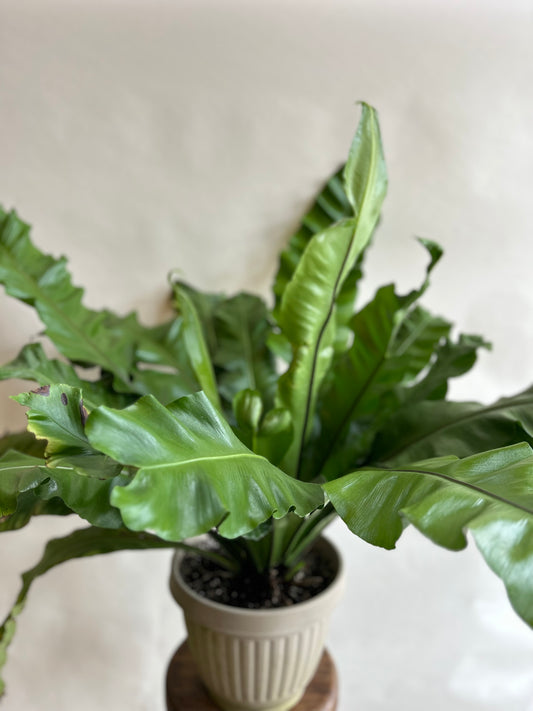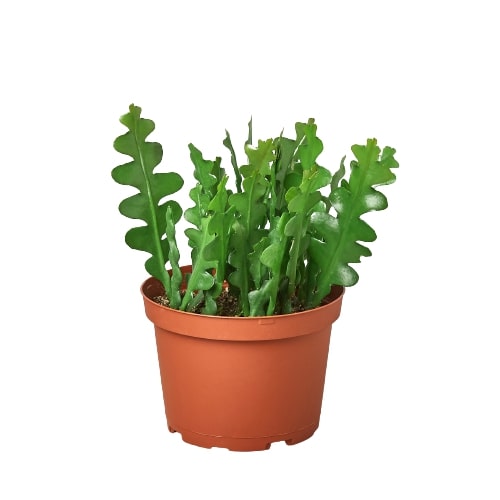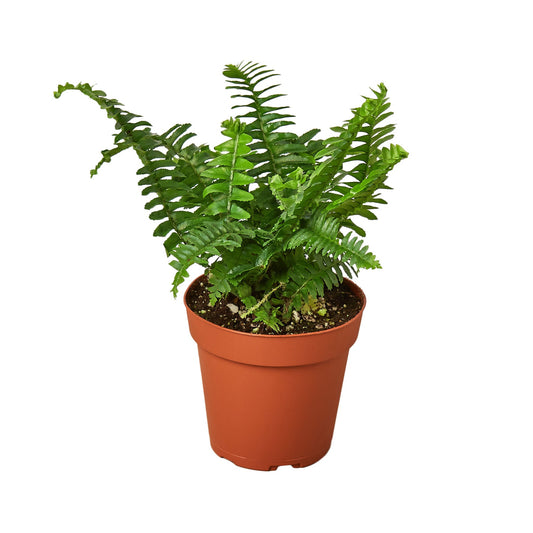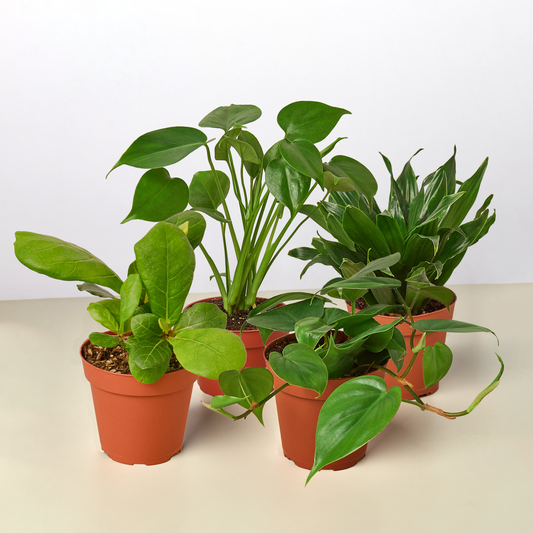How To Treat Spider Mites On Vanda Orchids
Cafe Planta Team
Dealing with spider mites on your Vanda orchids can feel like a never-ending battle, especially when you're dedicated to keeping your plants in top shape. These tiny pests might be small, but they can cause significant damage if not handled promptly. The good news is that you can effectively manage and prevent infestations with a few smart strategies.
In this article, we'll walk through everything you need to know about identifying, treating, and preventing spider mites on Vanda orchids. From spotting the early signs of an infestation to exploring natural and chemical treatment options, you'll gain a comprehensive understanding of how to protect your beloved orchids.
Understanding Spider Mites
Spider mites are tiny arachnids, often less than a millimeter long, making them hard to spot with the naked eye. These pests thrive in warm, dry environments and feed on plant sap, which can lead to a host of problems for your Vanda orchids. You might notice small yellow or brown spots on the leaves, and if the infestation is severe, you could see webbing—hence the name "spider" mites.
Interestingly, these mites can reproduce rapidly, especially in the right conditions. A single female can lay hundreds of eggs in just a few weeks, leading to a quick escalation of the problem. That's why early detection and treatment are crucial to keeping them under control.
But how do you know if spider mites are the issue? One simple method is to hold a white piece of paper under the plant and gently shake the leaves. If tiny specks fall onto the paper and begin to move, you're likely dealing with spider mites. Another telltale sign is the presence of fine webbing on the underside of leaves or between stems.
Identifying an Infestation
Spotting a spider mite infestation early can make all the difference in saving your Vanda orchids. The first signs often include stippling or discoloration on the leaves. As the mites suck the sap, the leaves lose chlorophyll, resulting in tiny, pale dots that can be mistaken for other issues like nutrient deficiencies.
As the infestation progresses, you may notice the leaves becoming more yellow or bronze, and their texture might feel rough or gritty. In severe cases, the plant's overall vigor decreases, leading to stunted growth and leaf drop.
To confirm your suspicions, a magnifying glass can be a handy tool. It allows you to check the undersides of the leaves for tiny mites or their eggs, which are often laid in clusters. If you're unsure, consulting a local plant expert or sending a sample to a plant pathology lab can provide a definitive diagnosis.
Remember, early detection is your best weapon. Regularly inspecting your orchids, especially during warm, dry months, can help catch these pests before they become a major issue.
Natural Treatment Options
If you've confirmed the presence of spider mites, the next step is choosing a treatment method. Many plant people prefer starting with natural remedies, as they're generally safer for both the plants and the environment. Here are a few methods you can try:
- Water Spray: One of the simplest ways to dislodge spider mites is with a strong jet of water. Take your Vanda orchids outside and spray them with a garden hose, focusing on the undersides of the leaves. This can help wash away the mites and their eggs.
- Soap Solution: Mix a few drops of gentle dish soap in a spray bottle filled with water. Spray this solution onto the affected areas, ensuring you cover both the tops and undersides of the leaves. The soap helps break down the mites' protective coating, making them easier to remove.
- Neem Oil: This natural oil is a favorite among plant lovers. It's both a miticide and a fungicide, making it an effective treatment for spider mites. Dilute neem oil according to the package instructions and apply it to the affected plants. It's best to use neem oil in the evening or early morning to avoid burning the leaves.
- Beneficial Insects: Introducing natural predators like ladybugs or predatory mites can help control spider mite populations. These beneficial insects feed on the spider mites, reducing their numbers naturally.
Each of these methods can be effective, but they often require multiple applications and close monitoring to ensure the mites don't return.
Chemical Treatment Options
If natural methods don't seem to be doing the trick, or if the infestation is particularly severe, you might consider chemical treatments. When using chemicals, it's essential to follow the product instructions carefully to avoid harming your orchids or the environment.
Miticides are specifically designed to target mites and can be very effective when used correctly. However, spider mites can develop resistance to these chemicals over time, so it's wise to rotate between different products to maintain their effectiveness.
Some popular miticides for orchid care include:
- Avid: This is a widely used miticide that targets a range of pest mites. It's best applied when temperatures are cool, and you should avoid using it during peak sunlight hours.
- Floramite: Known for its long-lasting effects, Floramite can offer control for several weeks. It's often used as a preventative measure as well as a treatment.
When applying chemical treatments, always wear protective gear and ensure the area is well-ventilated. It's also a good idea to test a small area of the plant first to ensure there's no adverse reaction.
Maintaining Orchid Health
Keeping your Vanda orchids in peak health is one of the best defenses against spider mites. Healthy plants are more resilient to pest attacks and recover more quickly if they do become infested.
Here are some tips for maintaining orchid health:
- Humidity: Spider mites thrive in dry conditions, so maintaining adequate humidity can help prevent infestations. Consider using a humidity tray or a humidifier, especially in dry climates.
- Watering: Vanda orchids prefer to be watered thoroughly and then allowed to dry out slightly. Overwatering can lead to root rot, while underwatering can stress the plant, making it more susceptible to pests.
- Light: Ensure your orchids are receiving the right amount of light. Too much direct sunlight can damage the leaves, while too little can stunt growth. Ideally, Vanda orchids thrive in bright, indirect light.
- Fertilization: Use a balanced orchid fertilizer to provide essential nutrients. Fertilize every two weeks during the growing season and reduce frequency during the dormant period.
By focusing on these aspects of care, you'll not only help prevent spider mites but also encourage your orchids to bloom beautifully.
Preventing Future Infestations
Once you've managed to get rid of spider mites, the next step is preventing future infestations. Regular maintenance and vigilance are your best allies in this battle.
Here are some preventative measures to consider:
- Regular Inspections: Make it a habit to inspect your orchids regularly, especially during peak mite season. Catching problems early can prevent them from becoming significant issues.
- Quarantine New Plants: When bringing new plants into your home, keep them isolated from your existing collection for at least a few weeks. This quarantine period allows you to monitor for any pests that might hitch a ride.
- Clean Environment: Keep the growing area clean and free of debris. Spider mites can hide in dust and plant debris, so regular cleaning can help keep them at bay.
By staying proactive and maintaining good plant hygiene, you'll create a less hospitable environment for spider mites and other pests.
When to Seek Professional Help
Sometimes, despite your best efforts, spider mites can be particularly stubborn. If you've tried various treatments and the problem persists, it might be time to seek professional help. A professional can assess the situation and recommend more advanced solutions, possibly saving your plants from further damage.
Look for local orchid societies or garden centers with expertise in orchids. They often have specialists who can diagnose the problem accurately and suggest effective treatments. Additionally, joining orchid forums online can connect you with other orchid enthusiasts who might have faced similar challenges and can offer advice from their experiences.
Monitoring and Follow-Up
After treating your orchids, it's vital to continue monitoring them to ensure the spider mites don't make a comeback. Regularly checking for signs of regrowth can prevent a repeat infestation.
Keep a journal of your treatment efforts, noting what worked and what didn't. This can be incredibly useful if you face a similar issue in the future, as you'll have a record of successful strategies to refer back to.
Additionally, maintaining a consistent care routine and environment for your orchids can help them recover more quickly and reduce stress, making them less vulnerable to future infestations.
Learning from Experience
Every plant parent has faced challenges with pests at some point, and each experience is an opportunity to learn and grow. Dealing with spider mites on your Vanda orchids can be a frustrating process, but it's also a chance to deepen your understanding of orchid care and pest management.
Reflect on what you've learned through this experience. Maybe you've discovered a new treatment method or developed a more vigilant care routine. These insights can be invaluable as you continue to care for your orchids and expand your plant collection.
Remember, every setback is a step toward becoming a more knowledgeable and skilled plant parent. Embrace the journey, and don't hesitate to reach out to fellow plant lovers for support and advice.
Final Thoughts
Treating spider mites on Vanda orchids requires patience and persistence, but with the right approach, you can protect your plants and enjoy their stunning blooms for years to come. From natural remedies to chemical treatments and preventative care, there are many ways to manage these pesky pests effectively.
At Cafe Planta, we're passionate about helping you care for your plants. Whether you're looking for new additions to your collection or need advice on plant care, we're here to support you. Feel free to email us or connect with us on Instagram. Let's grow together and create beautiful, thriving spaces filled with the joy of plants!


